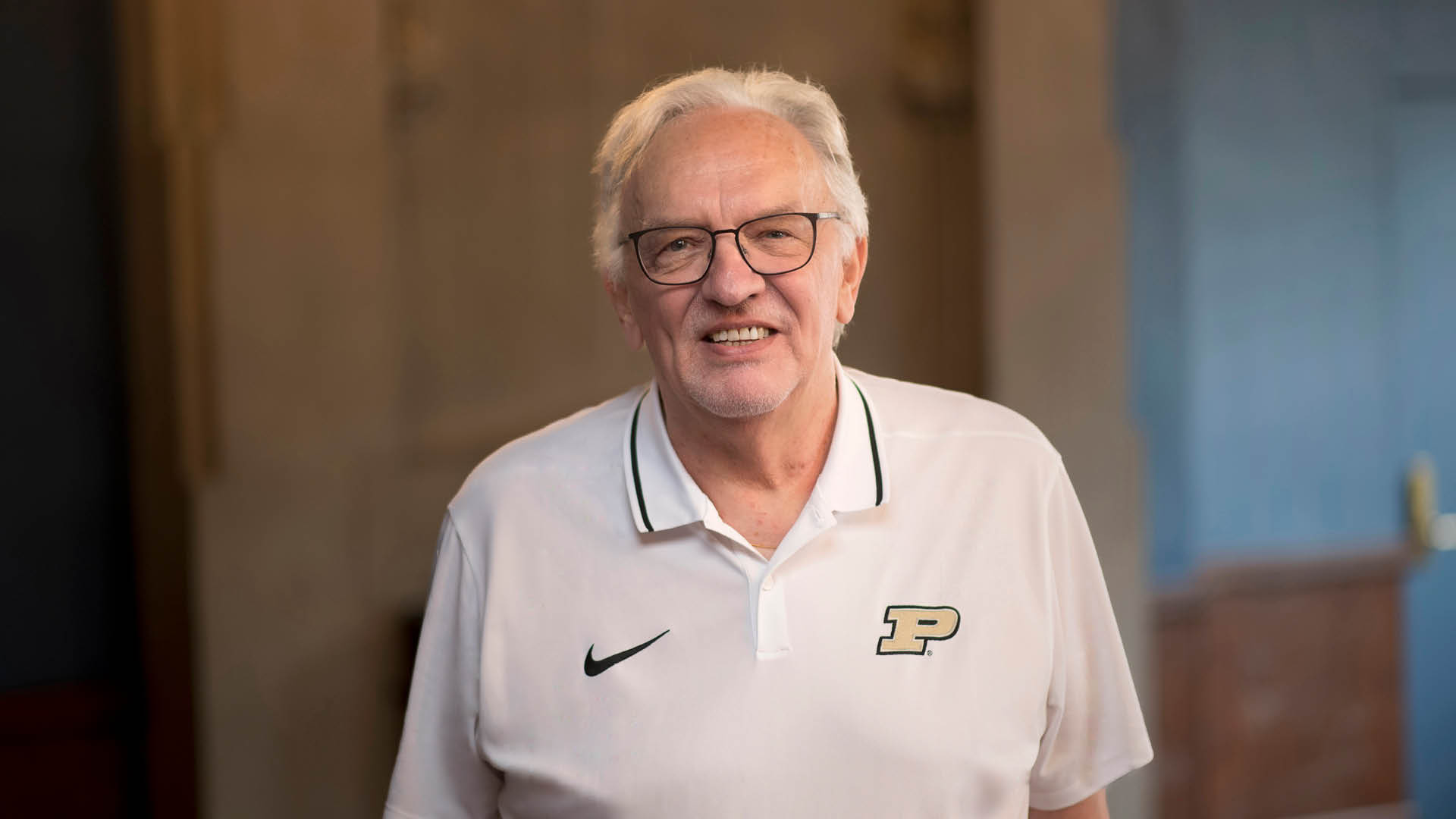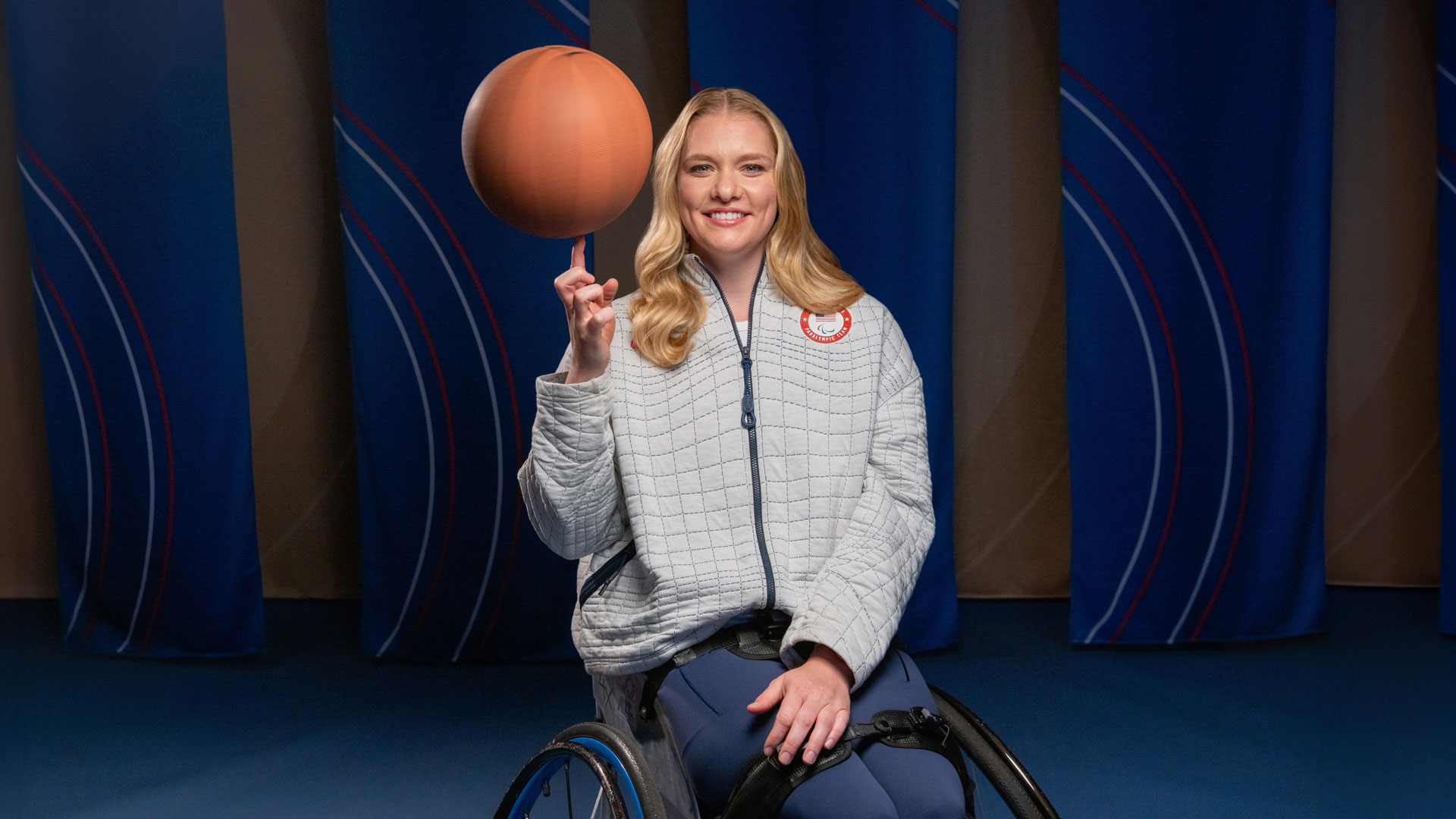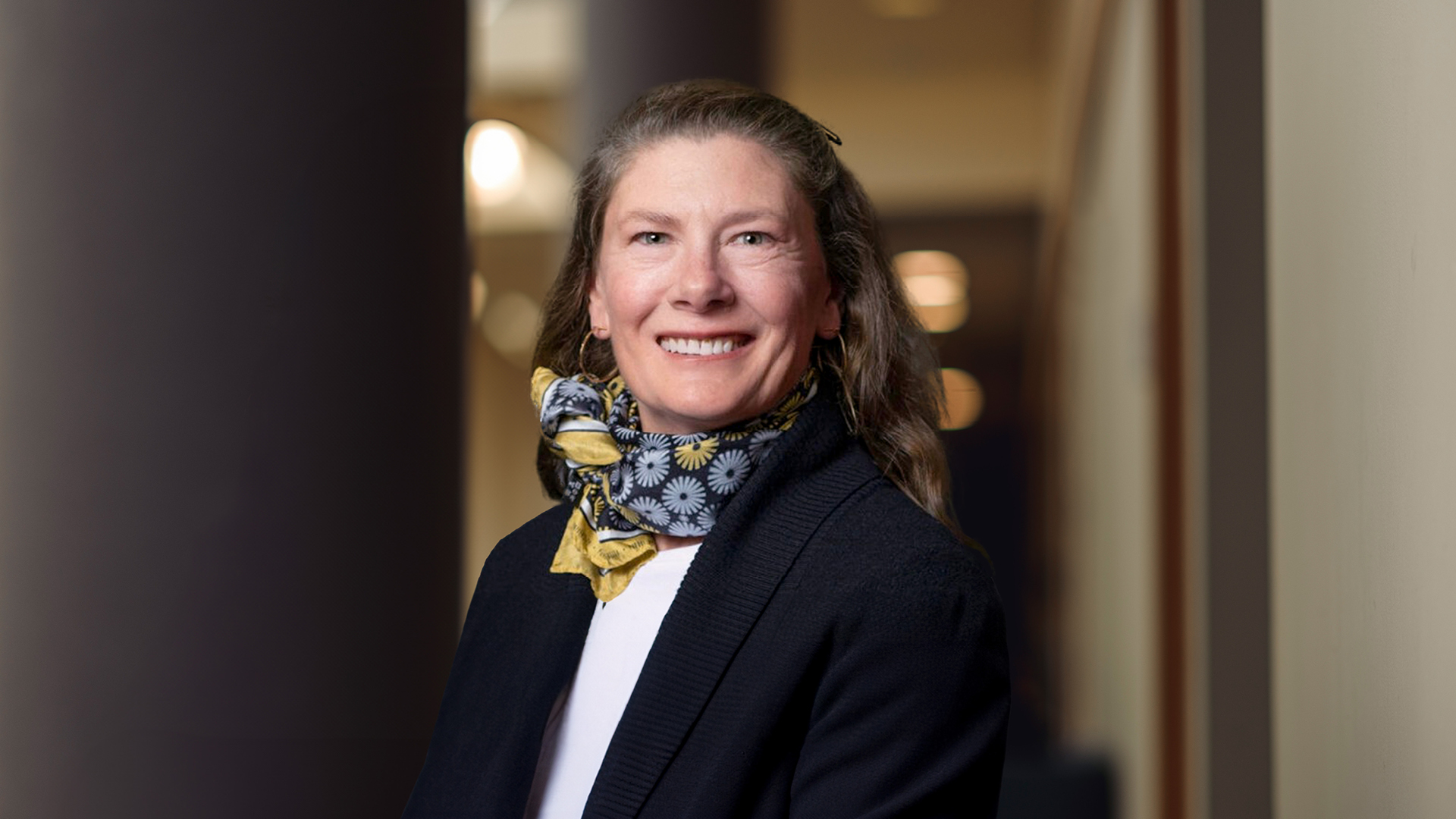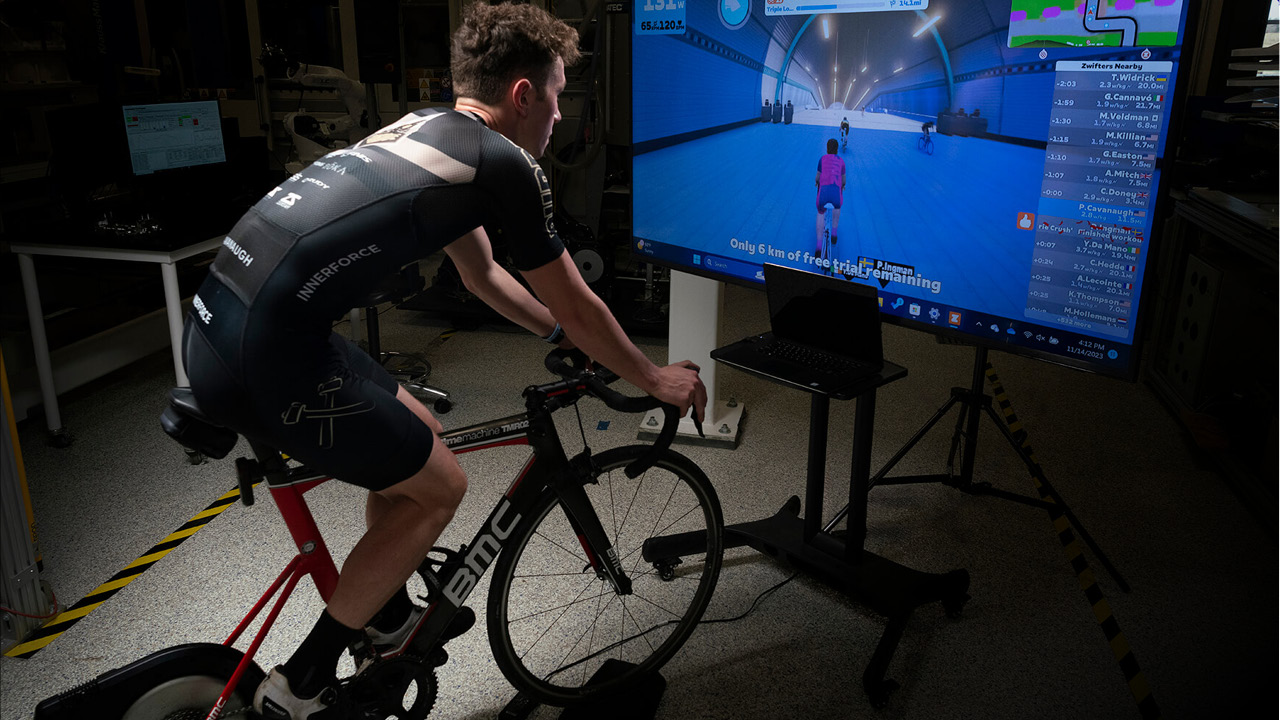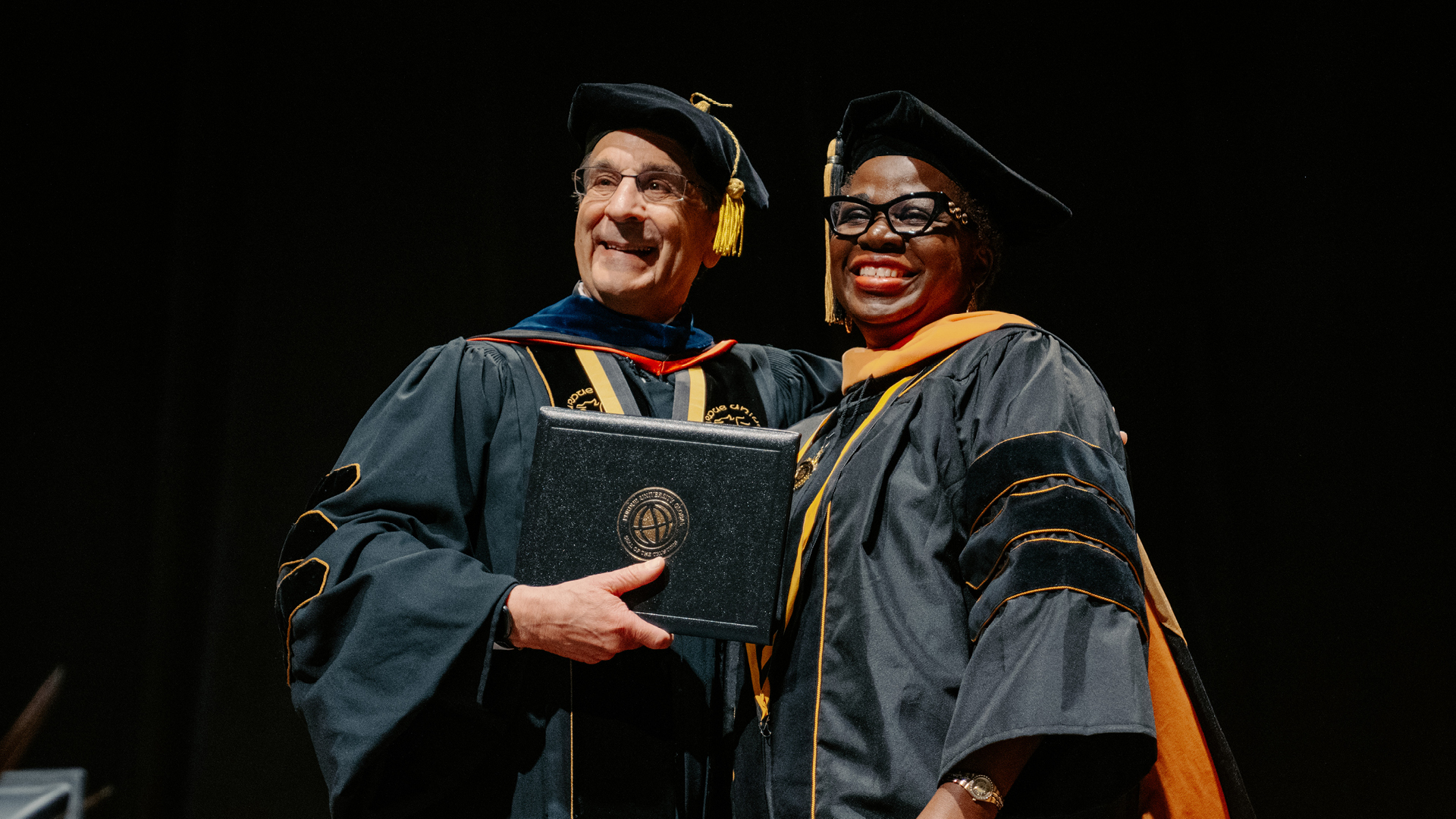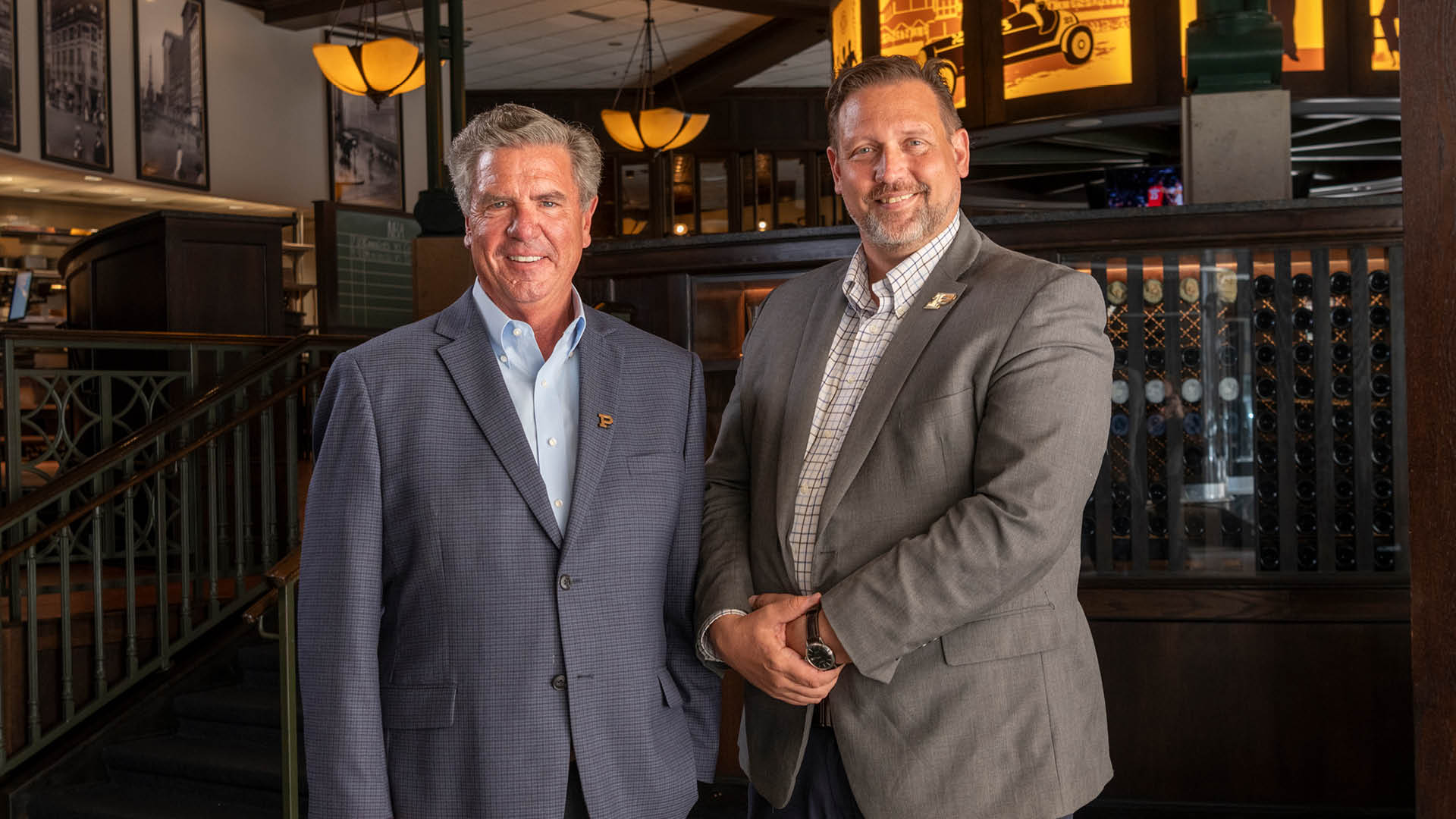Motorsports engineering student driven by passion for racing
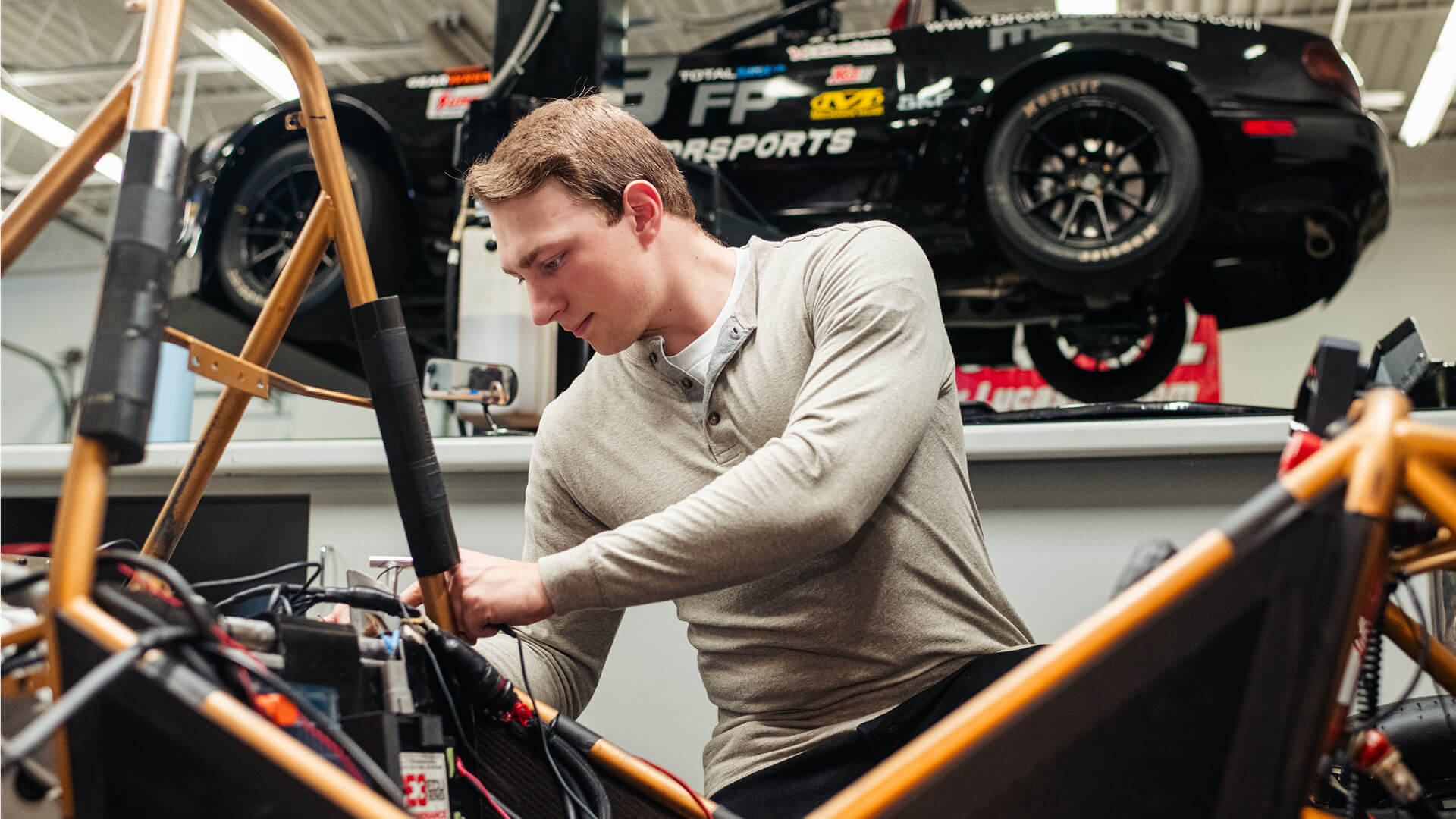
Reed England, a Purdue motorsports engineering student in Indianapolis, working on a project in the Stutz Building motorsports engineering lab.
Reed England is accelerating his Purdue career through one-of-a-kind experiences in Indianapolis
In the racing world, they say who you know is everything. Because of his experiences as a Purdue motorsports engineering student in Indianapolis, Reed England knows a lot of people.
As vice president and crew chief of the motorsports club, he’s met engineers, drivers, crew chiefs and racing staff members.
“I’ve also learned a lot about internships from other students and from recent graduates who already have jobs in the field,” he says.
England continues to rack up opportunities through networking. “The summer between my first and second year, I volunteered at the Indianapolis Motor Speedway and secured a spot traveling with a racing series,” he says.
Through another motorsports club connection, England worked as a systems engineer for Bryan Herta Autosport on the team’s No. 98 Hyundai Elantra N TCR car running in the IMSA Michelin Pilot Challenge.
Currently, he is a data acquisitions engineer for the three JTR Motorsports Engineering Porsche 911 992 GT3 Cup cars running in the Porsche Sprint Challenge North America, as well as for two Ligier JS P3 LMP3 cars running in the IMSA VP Racing Sportscar Challenge.
And it’s not just England who is making connections.
“Last year we had a motorsports engineering student or alum on 32 of the 33 IndyCars at the Indianapolis 500,” he says.
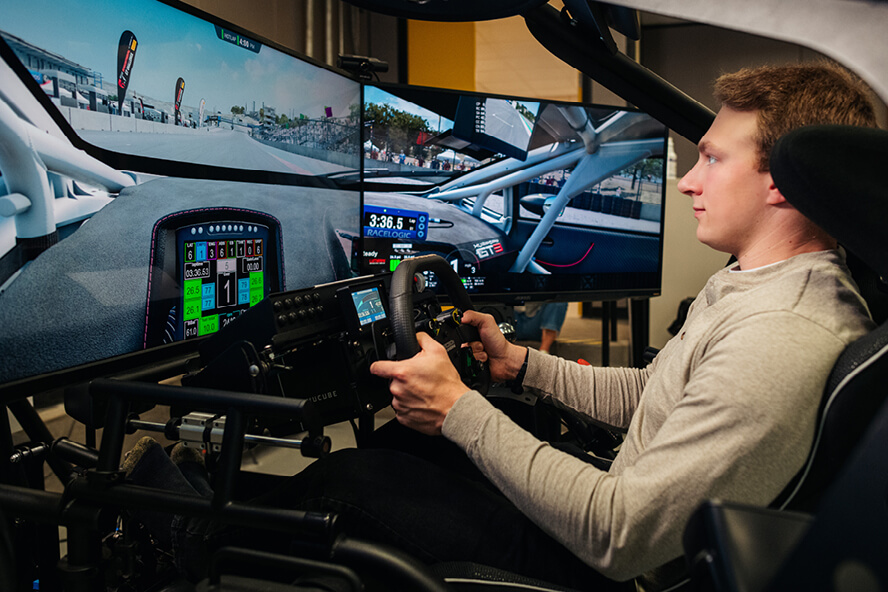
Last year we had a motorsports engineering student or alum on 32 of the 33 IndyCars at the Indianapolis 500.
Reed England Purdue motorsports engineering student in Indianapolis
One of a kind
Purdue University in Indianapolis has the only ABET-accredited undergraduate motorsports engineering program in the U.S. It is truly one of a kind. It’s also the reason England chose Purdue.
“I fell in love with cars and racing early on,” he says. “I knew it was the career path for me, but I always thought I would approach it through a degree in mechanical engineering.”
A story on his local early morning news channel set the Columbus, Indiana, resident in a new direction.
“My junior year of high school, I just happened to see a news feature on the motorsports engineering program, and I was like, ‘That’s it. That’s the degree I need to pursue.’”
The ‘Racing Capital of the World’
The Indianapolis Motor Speedway (IMS), home of iconic races like the Indianapolis 500 and the Brickyard 400, is only 3 miles from the Purdue campus in Indianapolis — an obvious advantage for motorsports students like England.
“When a racing season ends, teams are deciding whether they want to add a new car to their roster or begin a new project requiring more engineers,” he says. “Because of our location and reputation, Purdue in Indianapolis is one of the first places teams look to fill open roles.”
England says these types of employment and internship opportunities were the biggest draws to the university for him. “Within 20 minutes any direction of campus are numerous racing teams and engineering companies,” he says.
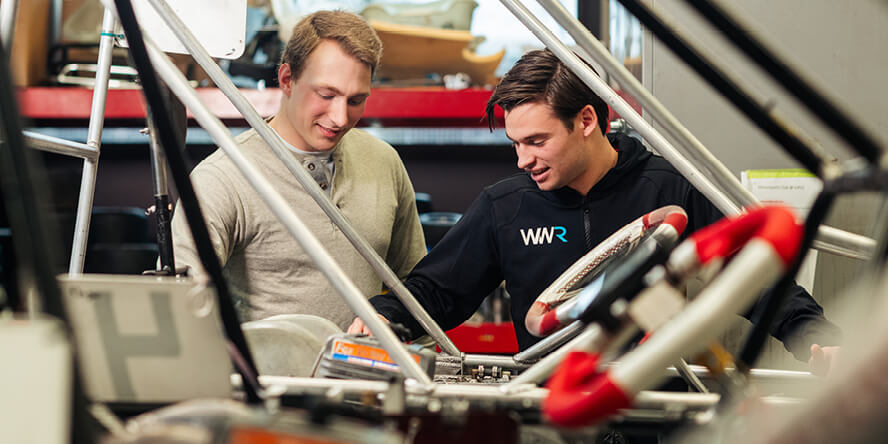
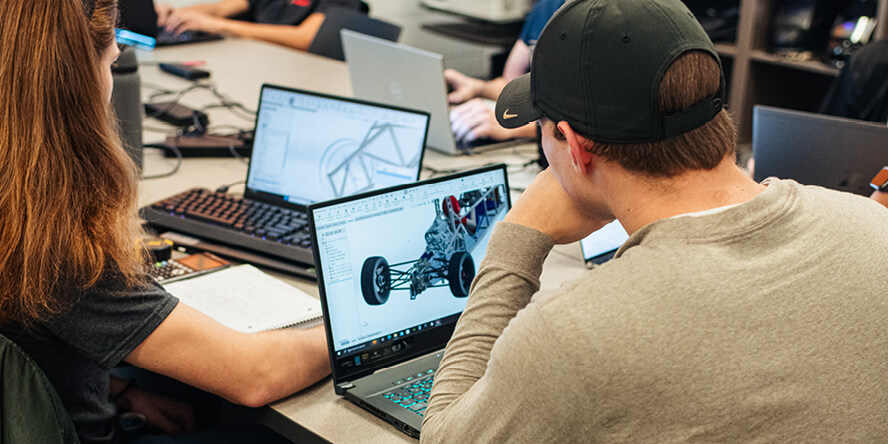
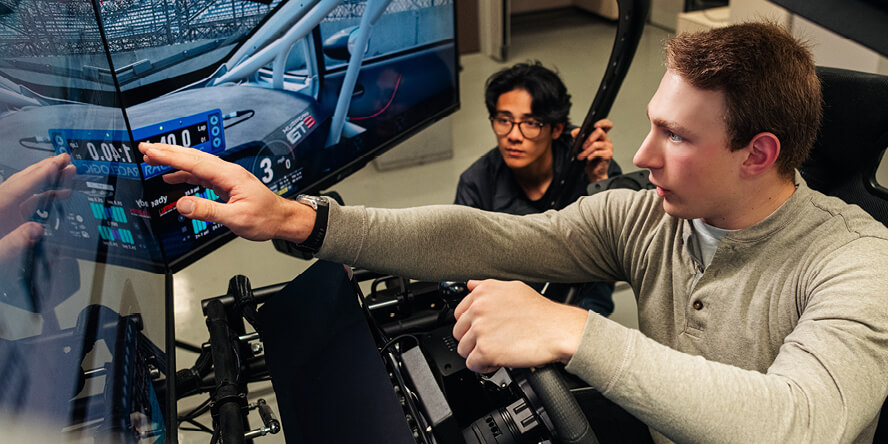
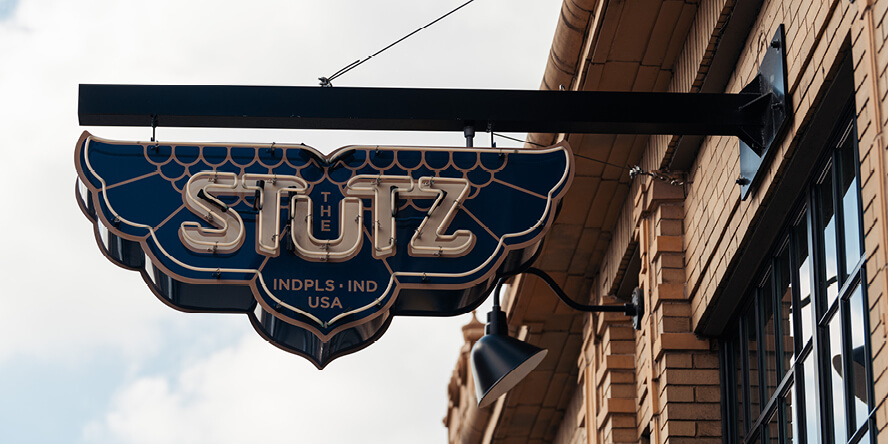
Hands-on learning
Proximity to the IMS also brings with it plenty of hands-on learning experiences.
“Being able to go into the paddock and see the industry at work in person has been incredibly motivating,” he says. “It’s exciting, and it just continues to solidify for me that motorsports engineering is what I really want to do after I graduate.”
England’s immersive experiences on the track have been mirrored in the classroom.
“My data acquisition classes have taught me software systems like Pi Toolbox and WinTAX4, which I need to analyze data and work as a data acquisitions engineer,” he says.
“I was able to step in and work at a more advanced level with the software than anyone else on my current racing team,” he adds.
The opportunity to lead engineering projects on actual race cars is a huge benefit, England says.
“On Fridays I spend most of my time collaborating with my class project partners at the Stutz building downtown,” he says. “It’s where we keep all our race cars, engineering materials, 3D printers. It’s also where we design and build.”
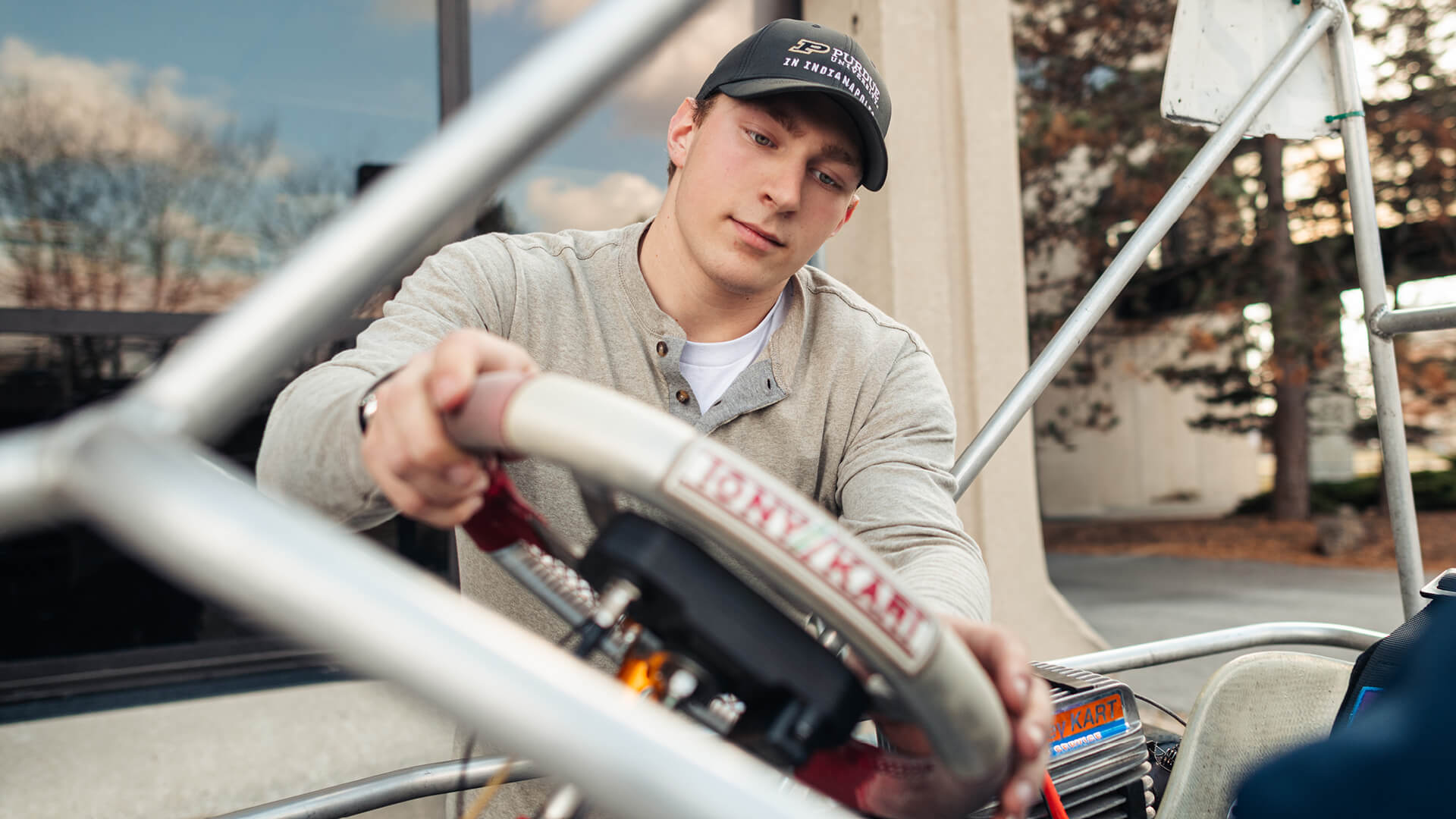
Close community
Indianapolis has a lot to offer college students outside of racing, too. And England said he takes advantage of it all. “You can walk pretty much everywhere,” he says.
“We don’t have a traditional campus,” he says. “Instead, we have downtown Indy. There are so many great restaurants, concerts and sporting events. When we’re not at the speedway, my friends and I like to watch the Indy Fuel play hockey. We also catch shows at the Everwise Amphitheater.”
For England, an unexpected bonus of learning in the city is that he has formed so many close connections on campus, and it all started during new student orientation.
“I was able to meet so many other people,” he says. “And the cool thing is that they were from different majors, different cities, even different countries. We did all these activities together. It was a great introduction to campus and a fun way to meet new people.”
Residence hall life and student clubs were another way that England made new friends on campus.
“The dorms were such an easy way of meeting people, especially my first year,” he says. “That’s where I made a lot of my friends, and now we all live in the same off-campus apartment building.”
England has an academic scholarship that connects him to students outside of his major, especially when they are doing volunteer work together on campus at Paws’ Pantry, which offers free healthy food to students and employees struggling with food insecurity.
Next steps
England, a junior, is looking ahead to graduation and getting into the field full time.
In the meantime, he is excited to cross the finish line with several engineering projects, including a rebuilt MGB GT, a Mazda Miata with updated radiator and fuel intake systems, and a former Formula SAE car that he and his team have been revamping.
“The more cars we have to drive and race in our motocross rotation, the more experience and knowledge we can gain for the future,” he says. “And there’s nothing more satisfying than creating something and then using it for competition.”
